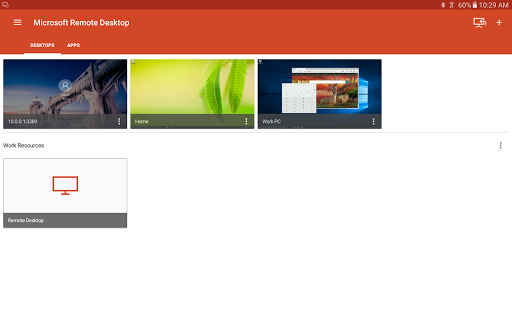

- #MICROSOFT REMOTE DESKTOP APP CONFIGURATION PROFILE HOW TO#
- #MICROSOFT REMOTE DESKTOP APP CONFIGURATION PROFILE INSTALL#
- #MICROSOFT REMOTE DESKTOP APP CONFIGURATION PROFILE WINDOWS 10#
- #MICROSOFT REMOTE DESKTOP APP CONFIGURATION PROFILE PC#
- #MICROSOFT REMOTE DESKTOP APP CONFIGURATION PROFILE PROFESSIONAL#
You’ll need to install it before you can move forward with the remote desktop configuration process.

#MICROSOFT REMOTE DESKTOP APP CONFIGURATION PROFILE WINDOWS 10#
USING THE MICROSOFT REMOTE DESKTOP APP ON WINDOWS 10 AND 11 There are many VPN providers and plans available to choose from. It’s a more secure, easy-to-use option for setting up a remote desktop connection that adheres to remote work best practices. When someone outside your network connects to a VPN, your Remote Desktop client behaves as if it’s part of the same network.
#MICROSOFT REMOTE DESKTOP APP CONFIGURATION PROFILE PC#
Port forwarding opens up your PC to the internet, increasing your security risk. Of these two options, it’s strongly recommended that you choose a VPN. There are two methods to enable remote access to a computer outside your network:
#MICROSOFT REMOTE DESKTOP APP CONFIGURATION PROFILE PROFESSIONAL#
Sometimes, however, there can be good reasons to allow access to a user outside your network, such as granting access to an IT professional who is troubleshooting problems on your computer or network. These are the steps to take if multiple people are using Windows Remote Desktop on the same private network.

#MICROSOFT REMOTE DESKTOP APP CONFIGURATION PROFILE HOW TO#
Keep in mind that this PC will need to be running a Pro edition of Microsoft Windows.įor information on how to upgrade to a Pro edition, visit Upgrade Windows Home to Windows Pro. To begin your remote desktop setup, you’ll need to enable remote connection permissions on the PC you want to connect to when you’re working remotely. Remote work collaboration and screen sharing are just as straightforward as they would be on the host PC. To the person connecting to the remote desktop, it’s as if the two devices were interchangeable. The client application establishes a remote connection to the server application, then displays the desktop environment, applications, files, and data on the user’s local device. This is particularly useful in remote and hybrid work scenarios and for providing IT support from a distance.Ī remote desktop environment includes two components: a client application that is installed on the user’s local device, such as their personal computer, and a server application that runs on the remote device the user wants to access, such as their work computer. With a remote desktop setup, a user can access their work computer from home, while traveling, or from anywhere with an internet connection. It enables someone to remotely connect to a computer or server-including all its applications, files, and data-as if they were sitting in front of the physical machine. In this article, you’ll learn how to set up and configure a remote desktop on any Windows PC.Ī remote desktop environment can be accessed and controlled from a remote location. HOW TO SET UP AND CONFIGURE A REMOTE DESKTOP ENVIRONMENTĪ remote desktop gives you the flexibility to work anywhere you need to-and it’s easier to get started than you might think.


 0 kommentar(er)
0 kommentar(er)
